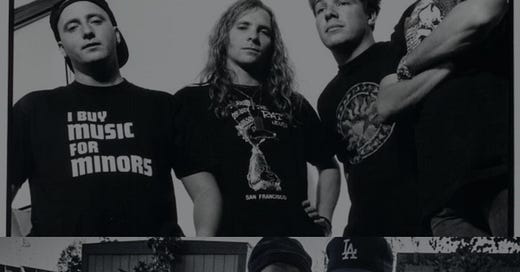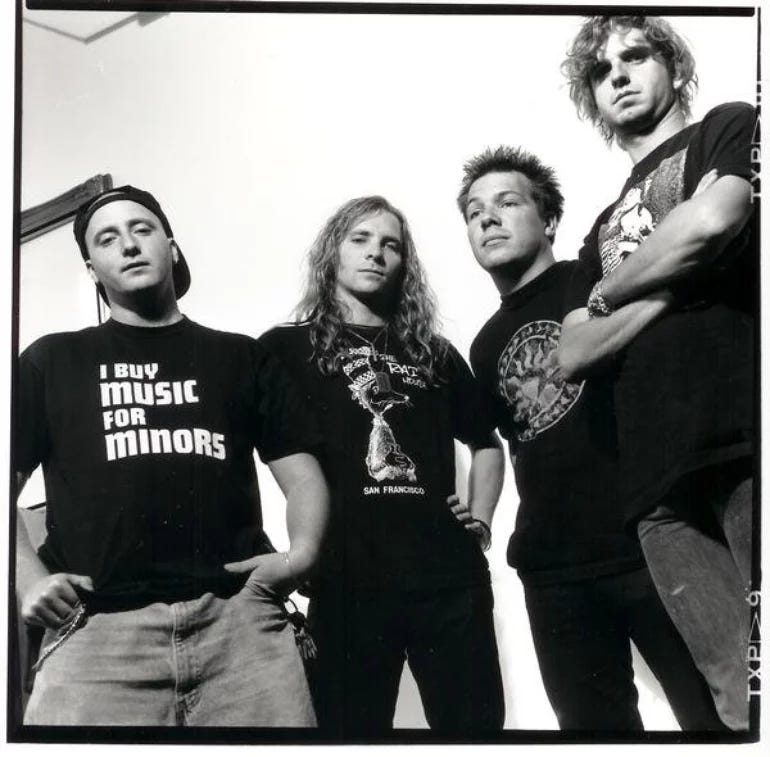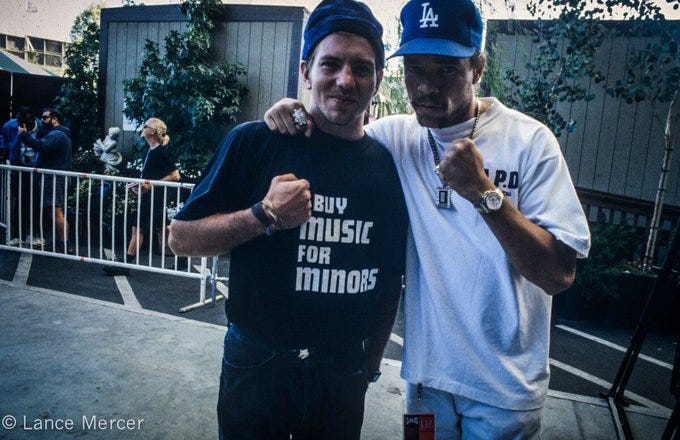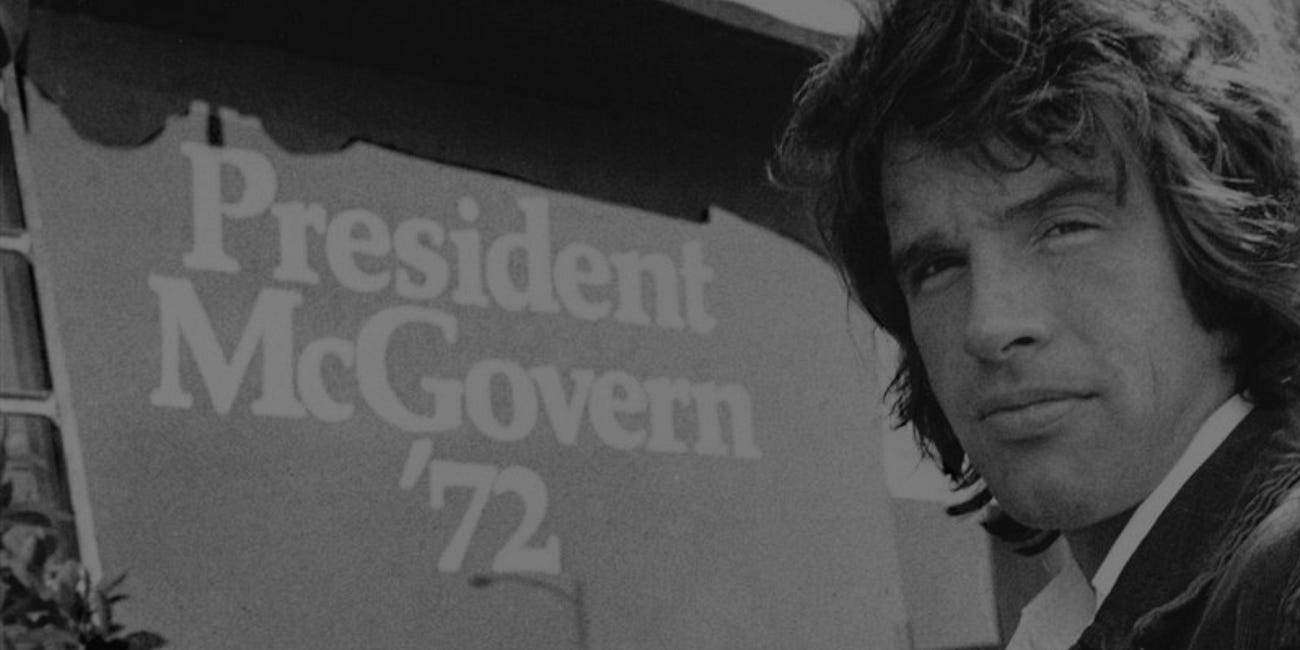Republicans And Democrats Against Grunge: Parents Music Resource Centre (PMRC)
''Why do you keep saying we're conservative?...My husband and I are liberal Democrats!''- Tipper Gore
Previously, as discussed, the financial crisis and President Ronald Reagan's Reaganomics (READ HERE, READ THIS OR THAT) had challenged the middle and lower American class systems. However, the promotion of self-indulgence and pleasure, promoting freedom, choice and self-centrism with beneficial outcomes also resulted in negative factors for society.
It affected the traditional family structures, like the maintenance of nuclear families, which are important for capitalist structures. This culminated in pessimism. However, it is important not to conclude that Ronald Reagan's policies created the consequences of single parent households. Such problems had been growing throughout the 1970s. Christopher Lasch proposes that ‘’Vietnam War, economic stagnation, and a loss of belief in political leaders led to mass malaise and pessimism in the late 1970s America.” (Grassian, 2003, p.34). Reaganomics, challenging the lower and middle classes, served to progress such issues. Likewise, with the issue of single parent households, the Census Bureau of America in 1982, reported that single parent households increased from ‘’3.3 million to 6.6 million from 1970 to 1981’’ (Single Parent Homes on Rise (Published 1982), 1982). The issue of broken families has been a constant grunge theme whether in Pearl Jam's ‘’Alive’’ (1991) or Nirvana's ‘’Sliver’’ (1992) or ‘’Breed’’ (1991).
The Pew Research Centre study between 2010-2018 of ‘’130 countries and territories show that the U.S. has the world's highest rate of children living in single-parent households’’(Kramer, 2019). Single parent households have continued to increase over the years. If the issue of broken families and success in the grunge scene is considered, such factors are responsible for the music's relatability to many 1990s consumers. With this in mind, Rebecca Jayne Stack and Alex Meredith conclude that single parents are ‘’a stigmatised group in that they are in possession of a set of characteristics that conveys a social identity that is often devalued within society ‘’ (Stack and Meredith, 2017), highlighting that those single parents are at a higher risk of dealing with depression when facing financial difficulties. In return, such factors affect and leave an imprint on children, leading to the concepts of broken homes and troubled upbringings. Frequently such concepts leave single parent children feeling stigmatised. This is something that President Bill Clinton addressed and warned with his concept of media as the third parent (this is will be addressed in future posts).
The issue of identity has been highlighted by Daniel Grassian: ‘’since the 1950s, critics have argued that there exists a growing generational shift in America, signified by homogeneity and passive acceptance of socially mediated identities (Grassian, 2003, p.34). Identity and identification within a social environment are important, further explaining how stigmatised identities such as single parenthood can develop the feeling of exclusion in society.
David Riesman suggests that the ‘’Post World War II generation lacks character and a firm sense of their own individual identity. These new other-directed people ‘live in a group milieu and lack the inner-directed person`s capacity to go it alone’’(Grassian, 2003, p.34). Riesman explains that Americans now are preoccupied with being ‘’liked and securely fitting into a social network’’ (Grassian, 2003, p.34). Something that even Kurt Cobain addressed explaining about himself that ‘’I'd rather be hated for who I am, than loved for who I am not’’ (Félix-Jäger, 2017, p.133). Cobain also suggests that the grunge movement contrasts with 1980s American mainstream mentalities as he desires to dismantle such ideologies.
With the emergence of grunge, which expressed the importance of being true to oneself and positive activism, combined with the romanticism within the music, promoted inclusivity. The attainable, non-offensive and simplistic attire encouraged the formation of an identity with greater inclusivity without the demand for one to change their own identity to fit into grunge. Krist Novoselic from Nirvana confirms that the grunge revolution was inclusive (Novoselic, 2004, p.22). In such a manner, grunge was able to spread and gain popularity more successfully than punk. Political activism was encouraged under a recycled, working-class aesthetic with pop melodies. Punk had culminated in undesirable associations in the mainstream in the 1970s and 1980s which had not allowed it to progress into the mainstream in the way that grunge did.
However, youth troubles had not been created by rock musicians as ‘’notably, President Ronald Regan in 1986, ‘’pointed the finger squarely at rock celebrities and the entertainment industry’’ when asked about troubles of the youth.’’ (Stephens, 2018,p.7). Ronald Reagan stigmatised rock musicians whilst neglecting to reflect on policies which had financially challenged the lower middle class and contributed to their troubles.
Alongside this, The Parents Music Resource Centre (PMRC) became the organisation aiming to combat racial blending of musical styles. The American committee (PMRC) worked with the government in order to protect American children against sexual, violent and drug related content in American music.
Grunge and PMRC
In August of 1985, Tipper Gore and Susan Beker opened the Parents Music Resource Centre (PMRC), demanding that record companies label musical albums with 'X' for sexual explicitness, 'V' for Violence, 'D/A' for drug and alcohol references and 'O' for occult content.
The organisation was supported by National PTA and the American Medical Association with members of the organisation consisting of wives of prominent politicians, quoting a ‘’ National Council of Churches study that purportedly showed a ‘’direct causal relationship between violence in the media and aggressive behaviour in society’’ (Goldberg, 2005, p.129). Tipper Gore, the wife of Sen. Albert Gore of Tennessee, herself led the charge of a bipartisan group and held ties with ‘’Southern California group that claims the Star of David is a symbol of the devil’’ (Goldberg, 2005, p.156). Which Danny Goldberg (manager of Nirvana, owner of Gold Village Entertainment, an artist management company) argued made it even more dangerous.
With the PMRC senate hearings in 1985, Gore attacked artists such as Van Halen, Cyndi Lauper and Prince, claiming to protect the American children. Goldberg took part in the hearings and had organised a group ‘’of managers, agents, PR people, artists and some label execs called The Musical Majority (a reference to the Moral Majority founded by Televangelist Jerry Falwell), which was created in association with the ACLU (American Civil Liberties Union)’’ (Cole, 2010), to oppose the ideas by PMRC.
Goldberg recalls Gore being agitated, asking ‘’why do you keep saying we're conservative?...My husband and I are liberal Democrats’’ (Goldberg, 2005,p.146). Just like Republicans and Democrats had agreed on globalisation, both now agreed on censorship for artists. ‘’It became obvious that Tipper Gore loved being on TV as much as I did. She linked rock with propaganda that had come from right wing Christians like the reverend Jeff Ling’’ (Goldberg, 2005, p.155). Goldberg argues that PMRC seemed to attempt at the height of Reagan's popularity ‘’to repress popular culture, a culture that reflected an America very differently from the one that ruled in Washington’’ (Goldberg, 2005, pp.131-132). Famously, Frank Zappa called PMRC ‘’a group of bored housewives’’ who wanted to ‘’housebreak all composers and performers because of the lyrics of a few’’ (Goldberg, 2005,p.133). The Recording Industry Association of America (RIAA) denied the rating system advertised by Gore yet settled on the Parental advisory sticker.
However, Gore attacked Guns'n'Roses even when the group placed the sticker on the cover of their albums. Tipper Gore's raid on rock music, with Bill Clinton's theory about media being the third parent for American children (which will be discussed in future post), tightened the free speech aspect for artists and strengthened the stigma around rock music, particularly with the implementation of the Parental Advisory sticker (what had become known as the ‘Tipper Sticker’). Ronald Reagan's policies and the Moral Majority's conservatism further expanded into the PMRC, criticising, and aiming to censor rock and punk music.
The state of Washington passed the Erotic Sound Statute (1992), banning the sale of music which appeared 'erotic' with the intention of protecting the children of the United States from obscenity. However, in Soundgarden v. Eikenberry (1994), such a decision was overthrown.
Not only did the statute breach the First Amendment, it indicated a stern, authoritarian approach to music censorship from the US lawmakers. This is especially significant when considering the fact that the bill was reintroduced in 1995 as the Matters Harmful to Minors bill. This was enforced by the House of Representatives of the state of Washington. In conjunction with laws such as the Teen Dance Ordinance (1985-2002) in Seattle, which banned teen dances in the city, unless strict provisions were followed; it hindered the local scene, as most promoters did not want to take the responsibility of the costs. Furthermore, the law targeted concerts as the law did not define 'dance', meaning that concerts qualified in the exemption. Young teens had to go outside of the city, as some bands ‘’[avoid Seattle because] they can’t do an all-ages show” (Vogel, 1999) contributing to Seattle becoming isolated. With the legislature, Krist Novoselic from Nirvana explains that:
‘’You would have a sticker in 48-point type on your CD or your record saying, “This is harmful to minors.” That sticker is basically a stigma. So, we would have to fight that. Like, Nirvana could fight it; we would have to sic the attorneys on it. But there would be a lot of artists who couldn't afford to do so. So, there you have the chilling effect where I can't say certain things. You'd be saying, “it sounds like I'm saying that, but as an artist I'm really saying this, which is very positive” (Hughes and Larson, 2008,pp.48-49).
Seattle band Coffin Break wearing the ‘I buy music for minors’ shirt (Hawkes, 2011).
Eddie Vedder wearing the ‘I buy music for minors’ shirt (Mercer, 2016).
In the case of music, the First Amendment did not work, and rock music was stigmatised and censored. The parental advisory sticker itself is a symbol of deterrence and condemnation, which gives the music a negative portrayal. Such was addressed by the Seattle band Coffin Break and Eddie Vedder wearing the shirt with graphic titles 'I buy music for minors', in protest of such censorship. However, not only rock music but rap music was targeted. One of the most prominent examples is the lyrics of Body Count- ‘’Cop Killer’’(1992), which became a target for PMRC and George H.W. Bush in 1993.
PMRC, traditionally as before, argued that lyrics in the song would influence young people negatively and put the police force in danger. Soundgarden had highlighted the breached issue of freedom of speech, performing with members of Body Count at Lollapalooza Festival in Summer 1992. Frontman Chris Cornell in the performance explained that: ‘‘you are not singing about wanting to kill somebody, you’re just singing for your rights’’ (Soundgarden - Cop Killer/ Soundgarden's Cover of The Body Count Song Cop Killer,2010).
Furthermore, signifying how freedom of expression was condemned by political organisations such as PMRC and the President of the United States George H.W. Bush. This also indicates how seriously music had been perceived by political figures. As well as indicating how music as a way to bring awareness and as an information source was disregarded by political figures. PMRC did not consider that the ‘‘the problem isn’t the song “Cop Killer.” The problem is what’s going on in these communities, and there’s a bad relationship between law enforcement and the communities. (Hughes and Larson, 2008, p.49). They were more concerned about the music representing rap culture and as previously discussed with the conservative Christians – integration of black culture in the mainstream. From a sociomusicology perspective, Generation X is protesting against such ideas through music, and it is effective as official figures have shown concern.
Chief Dennis R. Martin, the President of the National Association of Chiefs of Police, highlighted the outrage felt by American Police Hall of Fame and Museum due to Body Count`s song, indicating in his report that:
‘’music has the power both to "soothe the savage beast" and to stir violent emotions in man. Music can create an ambience for gentle romance, or unleash brutal sensuality… Yet the trend in American rock music for the last decade has been to promote ever more vile, deviant, and sociopathic behaviours’’ (Martin, 1993,p.159).
Like the mentioned example of Evangelicals burning rock records, Chief Dennis R. Martin is agreeing with the sociomusicology approach. Both Emery Schuber's and Paul Hindemith's perspectives align with him and the idea that music is effective in the regulation of emotions.
Whilst he praises Christian Churches choral singing and Beethoven, he targets rock'n'roll, explaining that with the explosion of Elvis Presley: ‘’ contemporary music did not reflect the values of society but glamorised rebelliousness and adolescent sexuality’’ (Martin, 1993, p.160) which only intensified throughout the 70s, 80s and 90s heavy rock bands. Notably, Chief Martin states that bands ‘’such as Guns'n'Roses, promote a panoply of anti-social behaviours and attitudes’’ (Martin, 1993,p.160) . Further, explaining that ‘’rap music is a culmination of the course charted by Elvis Presley’’(Martin, 1993,p.160). Insinuating that the cause of violence and rap music is due to rock'n'roll. Such a statement from Chief Dennis R. Martin reflects the anti-police mentality that as previously discussed punk and rock holds.
Reading daily exercises the brain, improves sleep and reduces stress, so why not read some more?! Check this out:
Celebrities As Political Coordinators
The synergy between celebrities and politicians has only increased over the years. West and Orman conclude that actor Warren Beatty`s efforts to organise celebrities to support George McGovern for his 1972 presidential election campaign ‘’helped to institutionalise the formal role of celebrity coordinator in election campaigns’’ (West and Orman, 2003, p…








